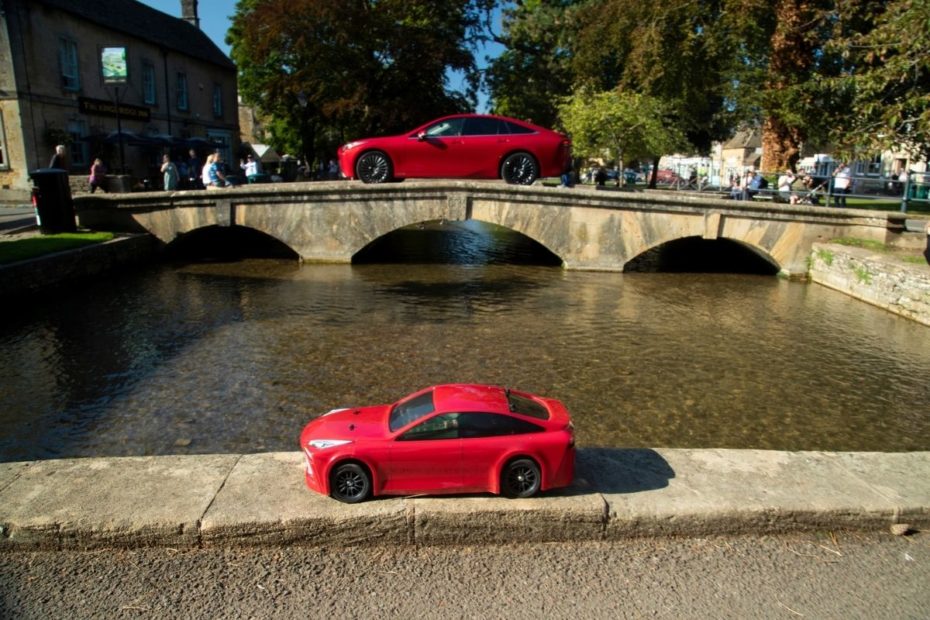Toyota Mirai Sets an Official Guinness World Record
The Toyota Mirai is a hydrogen-powered vehicle at the dealer of new and used cars near Santa Ana, Toyota of Orange. As a matter of fact, the new Toyota Mirai is making headline news for setting an official Guinness World Record title, and that’s for the longest distance covered by a hydrogen fuel cell electric vehicle without refueling. It covered an unheard-of 845 miles on a single, five-minute complete fill of hydrogen on a round trip in Southern California, creating a new distance benchmark for zero-emission vehicles at the dealer of new and used cars serving Santa Ana.
Guinness World Records oversaw the official Mirai World Record attempt. Everyone at the dealer of new and used cars near Santa Ana tells us they held to its strict rules and documentation procedures. The Mirai set down an extraordinary 152 mpge (miles-per-US gallon equivalent), with water as its only emission. Guinness World Records adjudicator Michael Empric gave the go-ahead on the car’s tank with a seal at the beginning and at the end of the journey.
Wayne Gerdes, a professional hyper-miler, drove the Mirai, and Bob winger acted as co-pilot. The pair used specialized driving techniques that boosted the car’s fuel efficiency ability while adhering to safety regulations and rules of the road. The two-day trip started on 23 August at the Toyota Technical Center (TTC) in Gardena, California, home of Toyota’s fuel cell development group. They went to San Ysidro and then north to Santa Barbara, cruising through Santa Monica and Malibu beach. They returned to TTC the same evening and recorded 473 miles with only two driver switches during the day.
The next day, the dynamic duo took the Mirai on local dring loops, where they plowed through 372 miles of the morning and afternoon rush hour traffic on the San Diego freeway until the fuel was sucked dry. They coasted back into TTC with a total of 845 miles driven, as seen by Empric.
By the time trip was over, the sales reps of new and used cars near Santa Ana had told us the Mirai guzzled a total of 5.65kg of hydrogen and went by 12 hydrogen stations along the drive routes without having to stop to refuel. The Mirai mainly was driven during rush hour traffic, in temperatures between 65 to 83 degrees Fahrenheit. It produced zero CO2, where a standard internal combustion engine vehicle would have emitted about 300kg of CO2 within the same distance.
This Mirai World Record achievement is the most recent in a series of Mirai efficiency feats. In June this year, it broke through the 1,000km (600-mile) range barrier in an economical run during the Paris de l’hydrogène hydrogen energy exhibition in Paris. In 2018, the first generation Mirai was the first hydrogen-fuelled vehicle to make the trip from John O’Groats to Land’s End in a marathon drive organized by Toyota and Autocar magazine.
Mini Mirai: How Toyota’s Hydrogen-Fuelled Car Shrunk?
Our cousins across the pond have created the Mini Mirai! It’s the UK’s first hydrogen-fuelled remote-controlled (RC) car, originating from the larger hydrogen-powered Toyota Mirai. However, why would anyone want to do such a thing?
Why Make a Mini Version of the Mirai?
Undoubtedly, Toyota has been on the cutting edge of hydrogen technology and wanted to display the potential for hydrogen to be used in numerous, slightly more innovative ways. Toyota has already established itself in hydrogen power, with over 20 years of hydrogen research and development, which led to the debut of its first production fuel-cell car in 2015, the first generation Mirai. Carrying on with its pioneering work on fuel cell technology and coming after this year’s debut of the all-new Mirai, Toyota is stepping up its fuel cell production ten-fold to 30,000 units a year. This will make the expansion of fuel cell technology possible within larger forms of transport and haulage, along with industrial energy applications.
How was the Mini Mirai Created?
Bramble Energy was called to produce this one-off Mini Mirai, a company with expertise in miniature hydrogen applications, and the Tamiya model company. When it came to the car’s body, Tamiya used their know-how to produce a 1/10 scale replica of the new Mirai hydrogen saloon with one of Tamiya’s well-known TT-02 RC cars used as the starting point. To get a remarkable likeness to the full-sized Mirai saloon, every part of the vehicle was analyzed, to a point where even the color of the Mini Mirai (Scarlet Red) has been identically duplicated.
Also, Bramble Energy went as far as to fit a miniaturized version of its printed circuit board fuel cell (PCBFC) system, hydrogen storage of a hydrogen fuel cell system, and a control system into the chassis Mini Mirai. The standard four-wheel drive RC chassis is the same one that is available in model shops before the Tamiya Mirai body shell was fixed on top. The Mini Mirai is furnished with two adjustable hydrogen fuel canisters, allowing for quick replacement when fuel dries up. The Bramble Energy system supports about 20 Watts of power, with double the running time capacity compared to a traditional battery-powered RC car.
